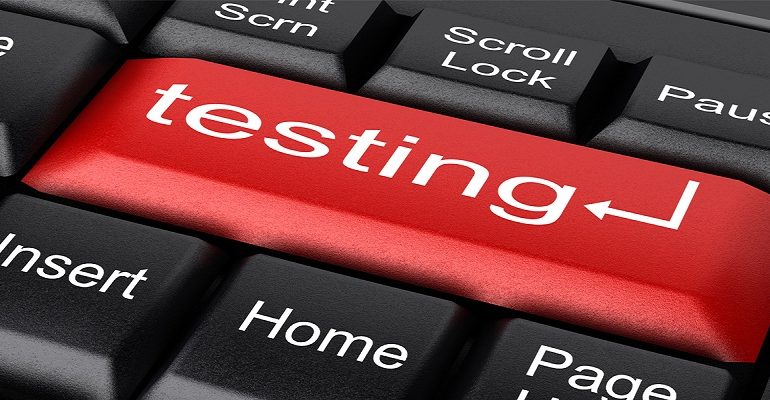
What is Smoke Testing in Software QA?

What is Smoke Testing in Software QA?
What is Smoke Testing in Software QA?
In software testing, the primary objective of testers is to identify and fix the bugs in an application to maximize its software quality. Every QA organization must perform various levels of testing before they deem it error-free and release it to the client or the market.
However, QA teams must ensure they implement the right testing procedures. If they do not, the entire process can become extremely complex and could also consume plenty of time. Smoke testing is one of the testing types that should be implemented strategically to deal with bugs.
Smoke Testing Definition:
Smoke testing is a subset of software testing that allows testers to verify whether a deployed software application is stable or not. This acts as a prerequisite to software testing and enables the QA team to know if they can proceed with further testing.
Smoke testing is a unique process that must be performed universally across every new application. To put it in simple terms, smoke testing helps QA teams verify if the critical features in a particular software build are working as they should.
For instance, if testers run it as a mini and rapid regression test, it is generally conducted for major functionalities. It helps them in saving time and resources in useless test processes. Thus, decreasing the project costs and increasing profitability.
Once a software build is verified in a smoke test, it is subject to further testing. Every software app comprises libraries, data files, engineered components, and also reusable modules. These components are needed for the implementation of one or more application functionalities.
Smoke tests are designed in such a way that they ensure familiarity with requirements and system stability.
Features of Smoke Testing:
Smoke tests include a number of important features that make them unique compared to other types of testing. Hence, testers and QA teams alike need to understand these features to conduct the process efficiently. Some of the key features of smoke testing follow:
- Smoke testing is also known as Build Verification Testing because the application is verified by testing the important features and then further levels of testing are executed based on results.
- It is an integral part of software development as the build is verified by testing the critical areas of the software.
- Testers can run both manual and automated smoke tests depending on the test requirements
- It is applied in various levels of QA like integration testing, system testing, and acceptance testing.
- It is a non-exhaustive testing type with a limited number of test cases. In regular terms, testers perform smoke tests with positive scenarios and valid data.
When Should QA Teams Perform Smoke Testing?
According to leading QA analysts in the industry, smoke testing is best performed when the new functionalities of a software app are developed and integrated with an existing build that is launched in the environment.
Through testing, testers aim to ensure that all critical functionalities are working as expected.During this testing method, the development team deploys the build in the QA and the subsets of test cases are recognized.
Further, testers run test cases on the build and test the application against the crucial functionalities. These test cases are designed specifically to expose errors in the build. Once these tests conclude, the QA team continues with functional testing.
Any failure in the app indicates the need to hand the system back to the development team. Whenever there is a change in the build, testers perform smoke testing to check stability.
Importance of Smoke Testing:
It plays a vital role in software development as it ensures the stability of the system in the initial stages. Based on this, testers manage to save test effort. Leading software testers in the industry are of the opinion that smoke tests place the system in a good state.
Once it is completed, testers can proceed with functional testing. All the components in the build get identified through smoke testing which is carried out after the build is released to QA.
It allows defects to be identified at the initial stages of software development. It also enables testers to simplify the detection and correction of major defects. They can identify defects that may have surfaced due to changes in the source code.
Benefits of Smoke Testing:
Here are a few benefits of smoke testing in the QA process:
Detects Show-Stopper Bugs Much Earlier:
According to statistics collected by top software testing companies, more than 80% of the faults or bugs in an application are discovered simply by configuring and implementing a smoke testing suite.
For several QA teams, tests might be covering merely 20% of all the test cases and yet identify twice the number of bugs. This stat alone makes smoke testing highly beneficial.
Improves the Effectiveness of the QA Team:
If any QA process is potentially wasting effort and time by running larger test suites when many of the issues can be discovered with a smoke test, it means the desired organization is wasting resources. Tests allow QA teams to work constructively and help them resolve issues in minimal time.
Faster Troubleshooting of New and Regression Bugs:
When bugs are found in testing, the development team can get to work much earlier on troubleshooting and perform root cause analysis rather than waiting till the results of the full test suite. This is mainly due to the high coverage and shallow depth nature of smoke tests.
If the application build is viable, it generates more efficiency and helps QA continue with partial regression testing on the same build while developers fix the bugs identified. Once these bugs get fixed, the developers can proceed with the fixing of any bugs that QA has found in the regression testing.
Tips for Smoke Testing:
Once a testing suite is created and an automation framework is also selected, testers focus on certain areas to keep the tests running healthy and providing valuable feedback. Those areas are:
- Creating tests and their maintenance.
- Continuous integration tools such as Jenkins and Circle CI.
- Consistent execution of tests.
- Creating a penalty for developers whose contributions do not pass.
Conclusion:
Smoke testing needs to be executed on every build as it helps QA team to identify defects in the initial stages. At Sapizon Technologies, we are one of the leading software testing companies you can find.
We provide one of its kind smoke testing services to our clients across various domains and help them deliver flawless software solutions to the market. Our team of software testers have military precision in implementing right QA strategies.
Book a free advisory session with us now.